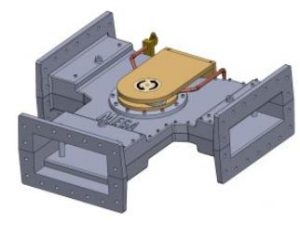What Is a Waveguide Horn Used For?
A waveguide horn, often referred to as a horn antenna, is a crucial component in the world of radio frequency (RF) and microwave engineering. Known for its distinctive flared shape, the waveguide horn is used extensively across various applications, from radar to communication systems. Its primary function is to efficiently radiate or receive electromagnetic waves across a broad range of frequencies.

Efficient Signal Transmission and Reception
Broadband Performance
One of the significant advantages of a waveguide horn is its broadband capabilities. Unlike many other antenna types, the waveguide horn can operate effectively over a wide range of frequencies. Typically, these horns can handle frequencies from as low as 300 MHz up to several gigahertz, depending on the specific design and dimensions of the horn. This wide frequency range makes them incredibly versatile and suitable for diverse applications in both commercial and defense technologies.
High Gain and Directivity
Waveguide horns are highly directional, which means they can focus electromagnetic waves into a tight beam. The gain of these antennas, which is a measure of their efficiency in directing the radio waves, can significantly enhance signal strength and quality. Typical gains for waveguide horns range from 10 to 25 dBi (decibels relative to isotropic), making them an excellent choice for applications where precise targeting of the signal is required.
Applications in Diverse Fields
Communication Systems
In communication systems, waveguide horns are used to transmit and receive signals over long distances. They are particularly effective in satellite communications, where their ability to send and receive signals to and from orbiting satellites is invaluable. The high gain and directivity of horn antennas help in minimizing the loss of signal strength, which is critical in maintaining the quality of the communication links.
Radar Systems
Waveguide horns are integral to radar systems, especially in applications such as weather monitoring and air traffic control. Their ability to emit pulses of radio waves and then receive the echoes from objects helps in determining the position and speed of those objects accurately. The precise beam control provided by horn antennas ensures that radar systems can operate efficiently, even under adverse weather conditions.
Scientific Research
In the field of scientific research, waveguide horns are used in electromagnetic compatibility testing and antenna measurement applications. They are used to generate controlled electromagnetic fields for testing the efficacy and compliance of various electronic devices with international standards.
Enhancing System Design and Efficiency
Simplified System Integration
The simplicity of the design of waveguide horns allows for easy integration into existing systems. Their robust structure and ease of manufacturing also make them a cost-effective option for many applications, balancing performance with economic viability.
Reliability and Durability
Constructed typically from metals like aluminum or copper, waveguide horns are durable and resistant to environmental factors. This durability ensures that they can perform consistently over long periods, even in environments exposed to harsh weather or high levels of radiation.
Waveguide Horn antennas are vital in advancing the capabilities of modern communication, radar, and research applications. By providing a reliable means to transmit and receive high-frequency signals, they play a critical role in the functionality and advancement of various technological systems. Their broad frequency range, high gain, and directivity not only enhance the performance of these systems but also contribute to the overall reliability and efficiency of many essential services.